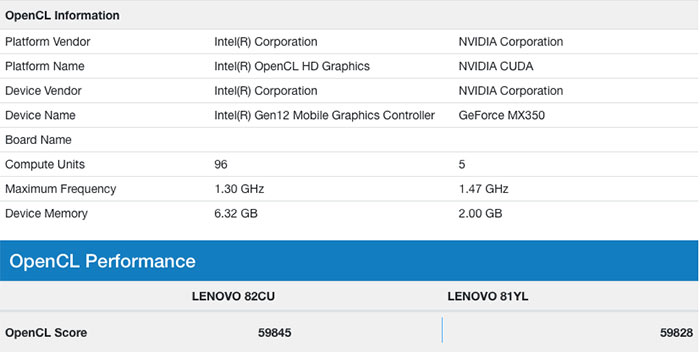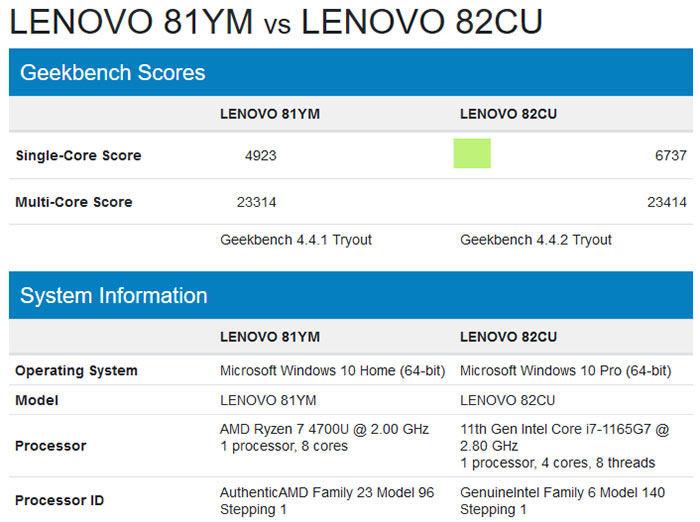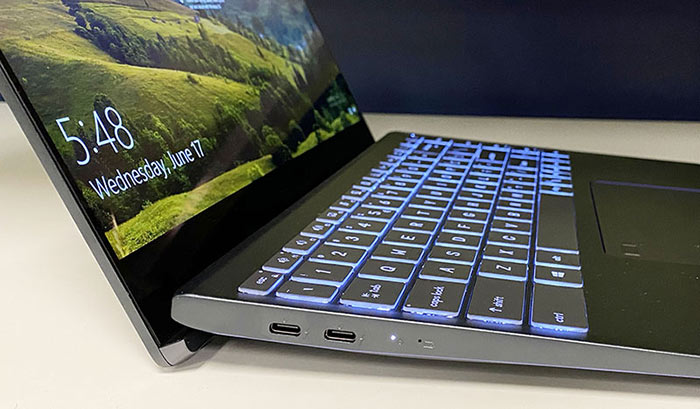Geekbench benchmark runs of a Lenovo laptop packing 11th Gen (Tiger Lake / TGL) Intel Core i7-1165G7 and Core i5-1135G7 processors have shown up in the results browser this weekend. Both Tum Apisak and RoGame have Tweeted out links to these interesting benchmark results.
Apisak's link leads to this page which compares two versions of a new Lenovo 82CU laptop featuring TGL processors. Both the i5 and i7 models are 4C/8T models according to this test. Differentiation comes via max clock speeds (2.42GHz and 2.80GHz, respectively) and the GPU/VRAM (80CUs/3GB and 96EUs/6GB, respectively).
The above is an interesting comparison to see but RoGame trumps it by comparing the TGL Core i7 graphics to another contemporary Lenovo laptop packing an Nvidia GeForce MX350 dGPU. The new Intel processor just has the edge in the OpenCL graphics tests in Geekbench.

So far we have compared Intel with Intel and Intel with Nvidia but many will be most interested in the TGL's performance compared to AMD's latest mobile APUs. A HEXUS reader sent me this link which pits the Lenovo 82CU laptop with Core i7 (4C/8T, TGL) processor against the Lenovo 81YM laptop with AMD Ryzen 7 4700U (8C/8T, Renoir) APU.

As you can see in the summary above, the new TGL part is significantly ahead in single-core tests. Of the 25 sub-tests AMD only came ahead in one, the memory latency test. Moving onto multi-core, the battle was much more even and quite balanced in general, as the combined score would indicate on first inspection.
So, is TGL going to be a strong strike back for Intel? Former Intel 'Performance Guru', and currently principal architect of Mercedes-Benz Research & Development North America, François Piednoël, seems to think so. Piednoël told his Twitter followers this weekend that "Single threaded performance of Tiger Lake is going to be devastating to AMD and ARM". He tempered his statement by asking whether any consumer computing pursuit other than gaming would benefit from this gain.

Putting the above in some perspective, remember in mid-June, Intel Chief Performance Strategist, Ryan Shrout, showed off a new TGL laptop playing EA's Battlefield V at 1080p using the High Quality preset.













